order

Coleoptera
“Adult Beetles”

Coleoptera
“Larval Beetles”

Diptera
“True Flies”

Ephemeroptera
“Mayflies”

Hemiptera
“True Bugs”

Lepidoptera
“Aquatic Caterpillars, Snout Moths”

Megaloptera
“Alderflies, Dobsonflies, and Fishflies”

Odonata
“Dragonflies and Damselflies”

Plecoptera
“Stoneflies”

Trichoptera
“Caddisflies”
family
Psychomyiidae
genus
Psychomyia
“Net-tube Caddisflies”
Genus Overview
Psychomyia is represented by 3 North American species. Larvae live usually in cool streams on rocks and logs, where they build meandering silken tubes much longer than the larva. These tubes are covered with sand and fine detritus. They scrape and gather diatoms and other fine organic matter from the substrate around the openings of their tubes and sometimes larvae of other insects. Occasionally they harvest fungi and bacteria cultivated in the older end of the tube.
Characteristics
POLLUTION TOLERANCE
Southeast: 2.6
Upper Midwest: 2
Midwest: 1.9
0 = least tolerant, 10 = most tolerant
FEEDING HABITS
Collector / Gatherer
Scraper / Grazer
Scraper / Grazer
MOVEMENT
Clinger
DISTRIBUTION
Widespread (east of the Rocky Mtns.)
HABITAT
Lotic-erosional
Diagnostic Characters
Order
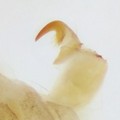
Prolegs With Single Hook
Family
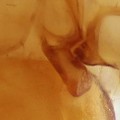
Hatchet-shaped Foretrochantin
+ Expanded Character List
Order:
Larvae: Wings/wing pads absent. Eye spots present, but compound eyes absent. Antennae usually small, inconspicuous. Three pairs of segmented legs present on thorax. Pair of anal prolegs, each with single hook, located on last abdominal segment. Larvae can be free-living, in silken retreats attached to substrate, or in usually-portable tubes or cases made of sand, rocks, or plant material.
Family:
Antennae small, nub-like, and inconspicuous. Foretrochantin broad and hatched-shaped. Meso- and metanota membranous. Abdominal tergum IX membranous. Larvae creating stationary retreats composed of sand and detritus, usually built on rocks or large woody debris.
Genus:
On the head, when looking ventrally, labium with pair of sclerites each longer than broad. Teeth absent along concave, ventral edge of each anal claw. Larvae constructing silken tubular cases, covered in sand, usually several millimeters in length, and found on rocks.
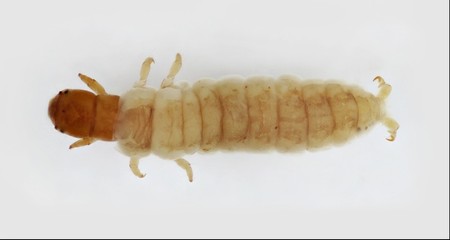
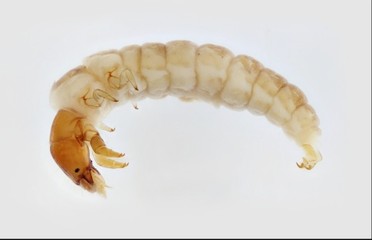
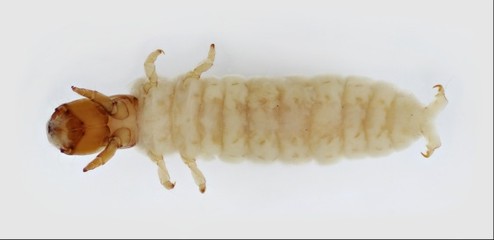
Dorsal
Lateral
Ventral



